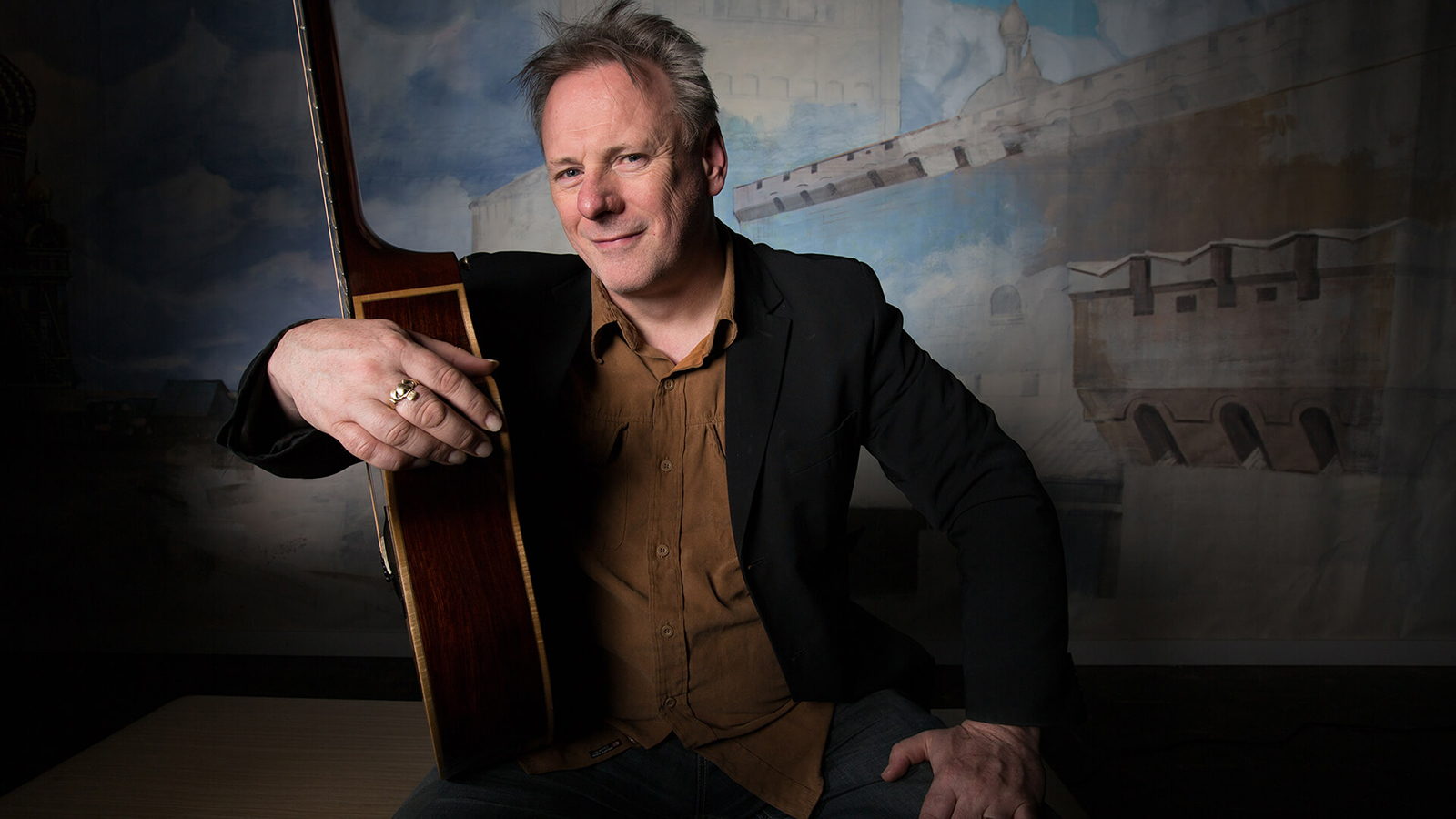Celtic music, a captivating auditory canvas woven from a rich cultural legacy, carries a unique resonance that transcends time and geographical boundaries. A product of the Celtic nations, this genre remains a strong symbol of the shared history, mythos, and identity of these vibrant cultures.
RELATED: Get Tony McManus’ Celtic Guitar Foundations NOW on TrueFire >
Rooted in antiquity, Celtic music takes its hues from the diverse folk traditions of Ireland, Scotland, Wales, Cornwall, Isle of Man, Brittany in France, and Galicia in Spain. The rich heritage is passed down through oral tradition, allowing the music to evolve while retaining its distinct thematic elements. This auditory legacy, characterized by its fluid, narrative quality, resonates with the lore and landscape of the Celtic people, much akin to an audiotory topography of their shared histories.
Melodic and rhythmic intricacies in Celtic music serve as hallmarks of this genre. The music, typically diatonic, leans towards a major or mixolydian mode, lending a unique and distinguishable sound. Often written in duple meter, the signature ‘reel’ and ‘jig’ rhythm patterns in Celtic music induce an irresistible urge to dance, echoing the community-centric nature of this tradition.
Instrumentation forms the backbone of Celtic music, with instruments like the Irish harp, Uilleann pipes, tin whistle, fiddle, and Bodhran drum crafting the genre’s characteristic soundscape. Noteworthy is the powerful role played by the human voice, an instrument in its own right. Storytelling through song remains a focal point, ranging from tales of epic battles and legendary heroes, to poetic musings about love, loss, and the beauty of nature.
A vibrant tradition of bardic musicianship underpins the structure of Celtic music. Historically, these bardic musicians, or ‘sean-nós’ singers in Ireland, were revered for their elaborate, unaccompanied vocal tradition. Their role was vital in preserving and transmitting historical, cultural, and social narratives, proving music to be more than entertainment – it was, and is, a vehicle for cultural continuity.
In the modern context, Celtic music has experienced a dynamic evolution, infusing elements of rock, pop, and electronic music. This has led to the creation of subgenres such as Celtic rock and Celtic punk, championed by bands like the Dropkick Murphys and Flogging Molly. These adaptations underscore the genre’s enduring relevance and versatility, maintaining its popularity on the global stage.
Celtic music festivals, such as the Celtic Connections in Scotland and the Festival Interceltique de Lorient in Brittany, serve as important platforms to showcase, celebrate, and preserve this genre. These annual events, attended by thousands, offer a testament to the music’s widespread appeal and its power to foster community and intercultural dialogue.
Celtic music has been blessed with the prodigious talents of numerous guitarists, whose skillful strumming has added a unique dimension to the genre. Let’s pay tribute to five of the most respected Celtic guitarists whose work has left an indelible imprint on this music style.
Tony McManus: A virtuoso in his own right, McManus has been dubbed “the Jeff Beck of the acoustic guitar” by notable musicians. The Scottish-born musician’s profound understanding of Celtic music and unrivaled technical mastery have allowed him to push the boundaries of the steel-string guitar, making his work a wellspring of inspiration for aspiring guitarists.
RELATED: Get Tony McManus’ Celtic Guitar Foundations NOW on TrueFire >
Davy Graham: Hailed as a pioneering force in folk guitar playing, Davy Graham brought a unique fusion of influences to the Celtic realm. He’s credited with introducing DADGAD tuning, now a standard in Celtic music, which opened up new harmonic possibilities and accentuated the drone strings, a characteristic feature of traditional Celtic instruments.
John Doyle: Hailing from a musical family in Dublin, Doyle has become one of the most influential players in Celtic music. His intricate fingerstyle and powerful rhythmic drive have garnered him numerous accolades. Doyle’s distinctive playing style has graced collaborations with other musical greats, including Liz Carroll and Tim O’Brien.
Soïg Sibéril: Brittany’s own Sibéril is renowned for his melodious approach to the guitar. His extensive use of open tunings gives his music a resonant and haunting quality, accentuating the emotive narrative in the Celtic tradition. His delicate fingerstyle playing and innovative arrangements have made significant contributions to Breton folk music.
Pierre Bensusan: French-Algerian guitarist Bensusan is known for his unique synthesis of Celtic, folk, world music, and jazz influences. Also a dedicated user of DADGAD tuning, his nuanced compositions and performances have gained worldwide recognition, underscoring his status as a major figure in contemporary Celtic guitar music.
These maestros of the strings have not only elevated the status of the guitar in Celtic music but also contributed to the genre’s evolution, underscoring its continual relevance in the global musical landscape. Through their talent, they reaffirm that the language of Celtic music, relayed through six strings, remains a vibrant and evolving dialogue.
Celtic music, undeniably, continues to strum the chords of our shared human experience, its melodies ringing out a powerful echo of the past while weaving harmonies that anticipate the future. Its narrative and community-centric ethos serves as a potent reminder of the pivotal role music plays in forging identities, conveying histories, and creating shared spaces of cultural dialogue and celebration.
RELATED: Get Tony McManus’ Celtic Guitar Foundations NOW on TrueFire >

